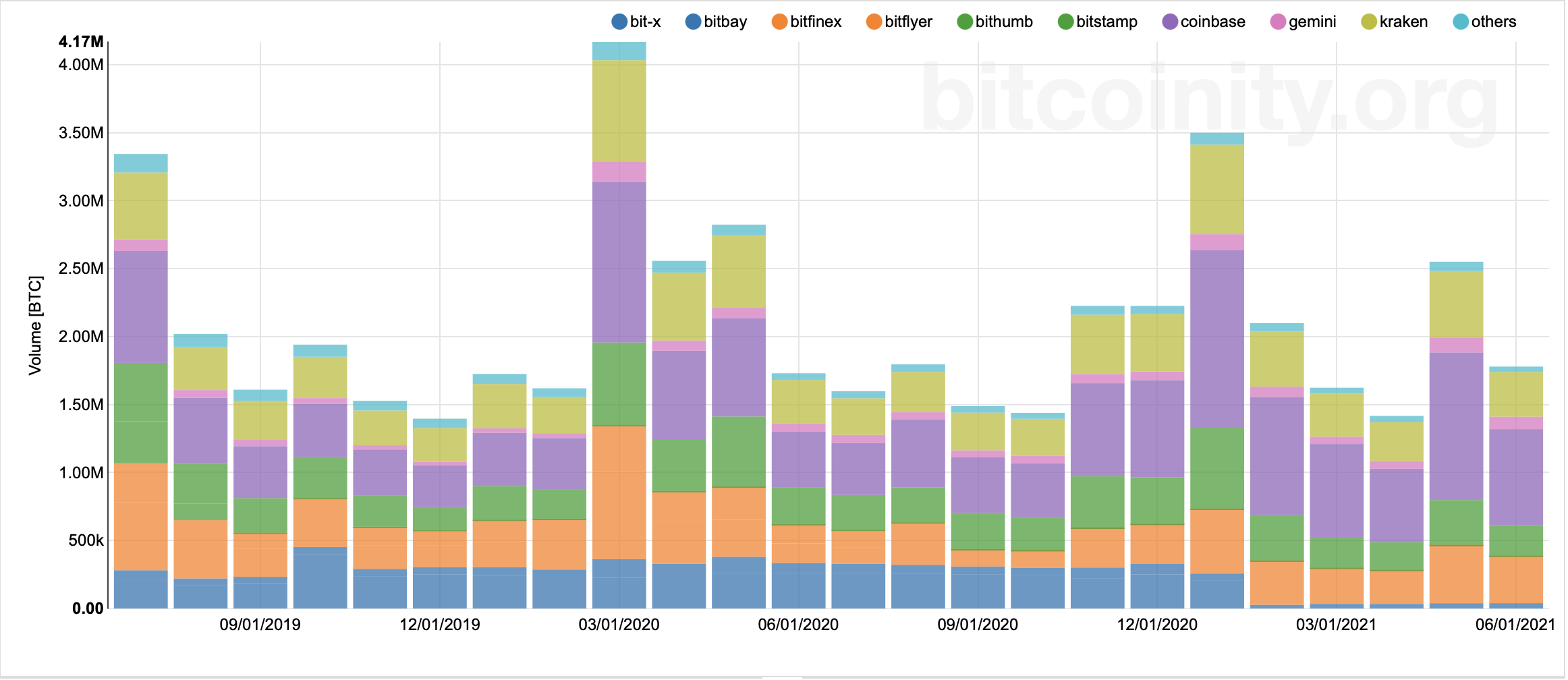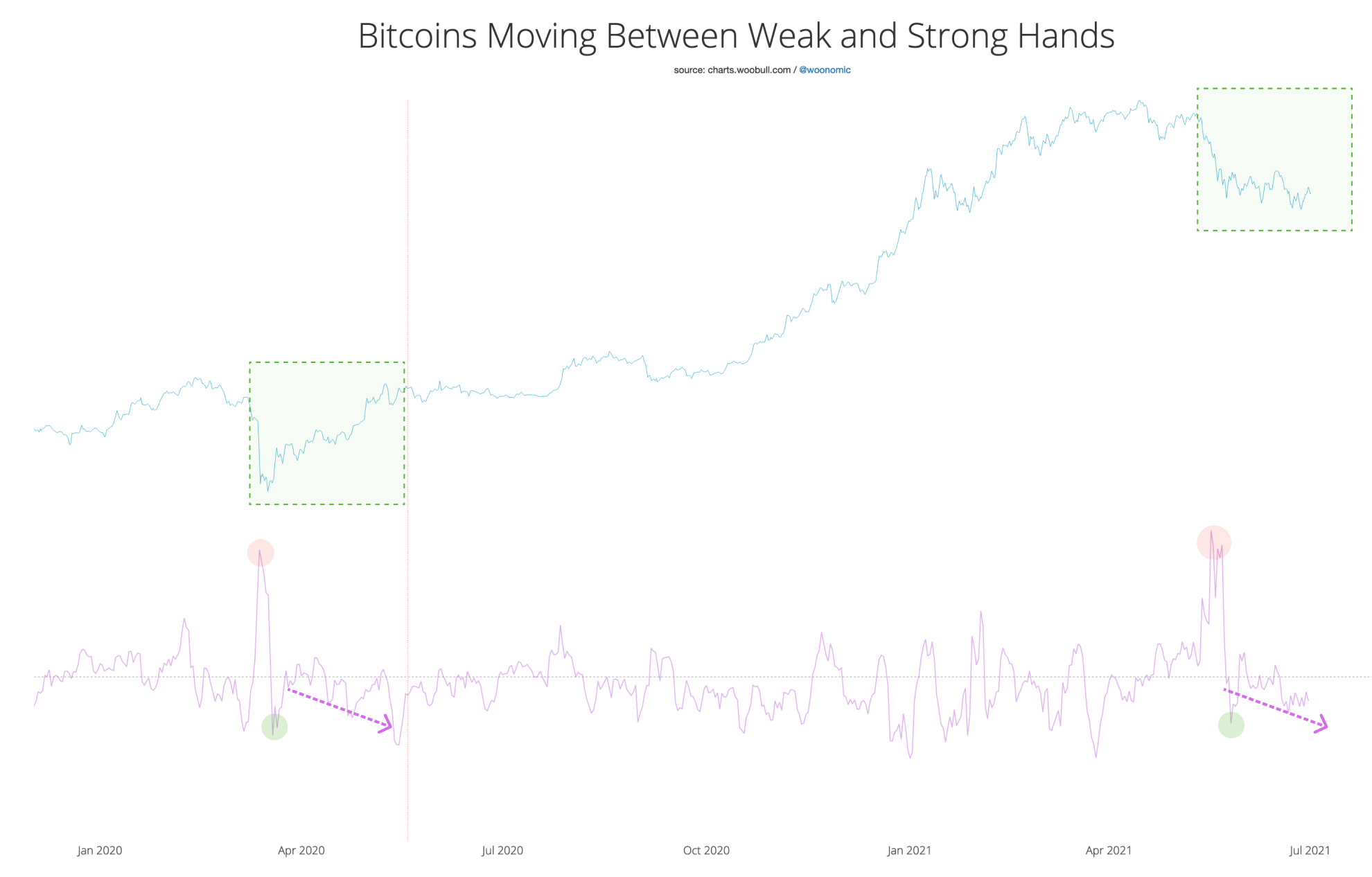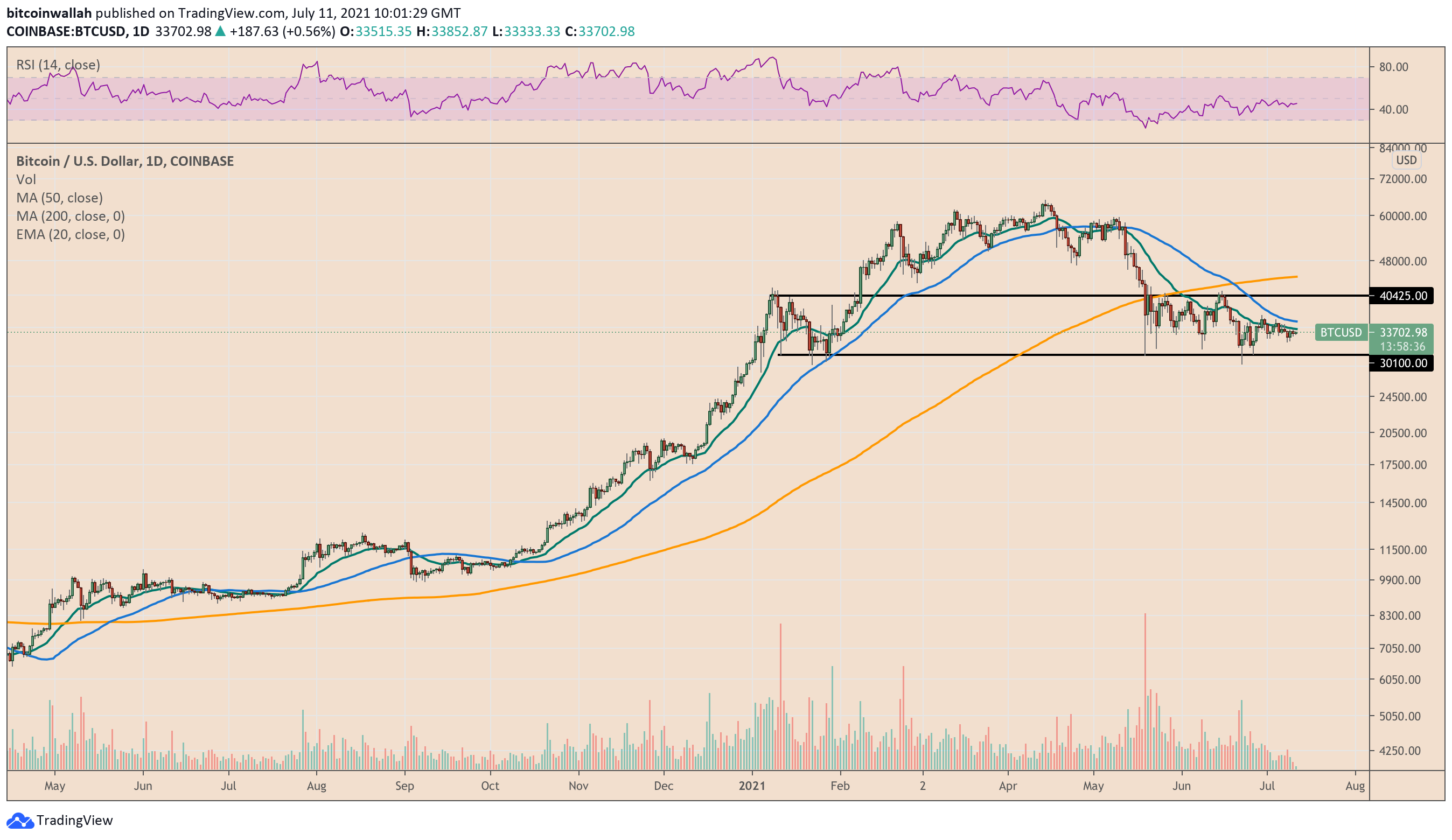Glassnode data reveals that investors with a long-term risk outlook have started accumulating Bitcoin during its recent downtrend.
Bitcoin (BTC) price remained relatively flat over the weekend, inching closer to $34,000 on July 11. Nevertheless, BTC/USD has tumbled by almost 50% from its all-time high, near $65,000 in mid-April. But the massive downside move has not deterred investors from betting on the digital asset’s long-term bullish outlook.
According to one of the Glassnode metrics, dubbed as Liveliness, the Bitcoin market has been noticing a shift in long-term investors’ “macro hodling behavior.” Hodling represents crypto investors’ ritualized response to market downtrends, a meme-driven investment strategy that originated from a drunken forum post in 2013 and typo.
Meanwhile, Liveliness is the ratio of cumulative coin days destroyed to the cumulative sum of all coin days ever accumulated by the network. It varies between zero and 1, with zero representing the highest proportion of dormant Bitcoin supply, i.e., HODLing behavior. It shows that the global coin day accumulation has been outpacing coin days destroyed in on-chain activity.
Nonetheless, a higher degree of distribution does not necessarily predict bearish cycles. For example, between November 2020 and April 2021, the Liveliness Ratio increased alongside the Bitcoin prices, suggesting that despite lower HODLing behavior, the Bitcoin market did not enter a bearish phase.
That could be due to massive spikes in trade volumes at the beginning of this year. In the first quarter, Bitcoin trading activity, on the whole, spiked to over $6 trillion, compared to $1.14 trillion in the fourth quarter of 2020, according to data obtained from Bitcoinity.

Therefore, while the long-term holders started spending their Bitcoin between November 2020 and April 2021, higher trading volumes across all crypto exchanges show that retail demand absorbed the selling pressure. But by April, as analyst Willy Woo noted, the selling overran the normal bull market buying pressure.
Speculative participants started selling off their new coins to long-term holders, Woo wrote in a newsletter published on July 2 while referring to a so-called “Rick Astley” chart that studies Bitcoin flows between strong and weak hands. Excerpts:
“It’s very clear to see that long-term holders are mopping up the speculative coins at a strong pace. It’s now a waiting game until this is reflected in the price action, the data is confidently pointing to an accumulation bottom forming.”

Bitcoin holds $30K
A spike in Bitcoin accumulation sentiment appears as the cryptocurrency continues to maintain its bullish bias above a strongly-held $30,000-support level.

The BTC/USD exchange first dropped to $30,000-level on May 19, during the overall cryptocurrency market crash. Since then, the pair has tested the price floor at least four times, only to witness a strong upside rebound later. That has made $30,000 a psychological support level, which, if broken to the downside, risks crashing the Bitcoin prices to as low as $20,000.
Joel Kruger, a forex strategist at London-based investment management group LMAX, noted earlier this week that Bitcoin could revisit $20,000, for it remains under the pressure of global market sentiment. The analyst was referring to the latest meltdown in stock markets, on worries linked to the spread of the Delta variant of Covid-19.
“It would be foolish to rule out the possibility for a drop back below the June low, and we think there would be a risk in that scenario where the #Bitcoin price could revisit the old record high area around $20,000,” he added.
“But at that stage, we see the market very well supported.”
The views and opinions expressed here are solely those of the author and do not necessarily reflect the views of Cointelegraph.com. Every investment and trading move involves risk, you should conduct your own research when making a decision.

















